Research Photo FileThe Kostyantin Olshanskyy of the Ropucha class, Photo 1, is the subject for this month’s Research Photo File. You might be forgiven into wondering what is a ship of the Ropucha class? She is in fact a Russian Tank Landing Ship from the old Soviet era, thus within the period of the Cold War, 1948 – 1991. This particular photo file comes from the archives of Bill Clarke and focuses on the ex - Soviet LST BDK 56. Now part of the Ukrainian Navy, but like all of the class she has never been seen in this detail in any publication up until now. The Ropucha classAs stated, all the class are tank landing craft and in Russian parlance is given a project number of 775, using the prefix BDK (Bolshoy Desatnyy Korabl) large landing ship. In all, 28 ships of the class were completed between 1975 and 1990. Following the collapse of the Soviet Union in 1991, former Soviet Republics ceded to become independent states. The Ukraine was singularly the largest of the former Soviet republics to break away and following protracted negotiations a number of ex-Soviet warships were to become part of the fledgling Ukrainian Navy. One such vessel is the focus of our Research Photo File and is now known as the Konstyantyn Olshanskyy (note the slight difference in spelling). Built at the Polnocny Shipyard, Gdansk in Poland she formed part of a second group entering service with the Soviet Navy in 1985. After long negotiations, BDK 56 was transferred to the Ukraine in March of 1996. This series of photographs were taken as the ship appeared in the September of the same year. U402 Konstyantyn Olshanskyy - prime purpose and functionEssentially the Konstyantyn Olshanskyy is a 3450ton LST and is designed to operate as a Ro-Ro (roll on/roll off) ship having both bow and stern doors. Akin to many of the principles of the LST, the bows can be driven straight on to the beach, Photo 2. The hull measures 112.50m by 15m and is fitted with two 16 cylinder diesel engines on two shafts. The military lift capability is up to 450 tons, accommodating either ten 41 ton tanks with 40 vehicles, crew and 150 troops or 12 amphibious tanks with 36 vehicles and crew or alternatively three 41 ton tanks, three 120 mine throwers, three armoured cars, four trucks, and five smaller thin skinned vehicles and 123 troops. |
|
ArmamentFitted forward and aft are two twin 57mm/80 calibre water-cooled duel purpose guns. Two 40 round 120mm UMS 73 (Grad M Artillery) barrage rocket launcher - see later text. Also true to another Russian tradition, there is a mine laying capacity to sow up to 92 one ton mines, when not being used in the LST role. A number of the Soviet versions were equipped with quadruple launchers for the SA-N5 Grail lightweight surface to air missile. The electronic installation will be discussed later in the Photo File. I doubt the existence of any model makers plans, but that doesn’t say they don’t exist. However there may be those ambitious enough to have a go at building this quite unusual, but not unattractive warship. To that end it is hoped that the following series of pictures will provide, on the one hand an insight into the Cold War Soviet doctrine of amphibious warfare and on the other hand, some photographic evidence that can be useful to the model builder. Photo tour - forecastle fittingsAs is customary, our photo tour will commence at the bows and then going aft, with Photo 3 highlighting the deck fittings right forward. Also it may be helpful to locate each of the fittings in a more general context with the use of Photo 1. Turning through 180 degrees, Photo 4 shows the position viewing from right forward towards the bridge. Note the very small breakwater. In the background can be seen a long rectangular hatch. This can be viewed in more detail in Photo 5. The hatch is divided into three sections and is used as additional access for loading general cargo or small vehicles. This picture contains a wealth of detail of the smaller fittings positioned around this part of the deck. Over to starboard, is the cable holder which is visible in Photo 6, including the hawse pipe and bonnet leading into the cable locker. The positioning of this in relationship to the anchor recess can be ascertained in Photo 7, with Photo 8 giving an excellent shot of the anchor secured well in to the recess. Also note below the recess, the depth markings and the white band above the anti fouling. Whether this can be called boot topping is an open question. Moving back on to deck, note the method employed to secure the hatches in place, Photo 9. Once again it’s worth casting your eye around the deck and clearly visible are collapsed white stanchions. These can be seen in the raised position in Photo 1. As for their actual purpose that is unclear – does any reader know? Armament detailsAs with all Soviet era warships, they are heavily armed with a variety of weapons. 122mm Grad M artillery rockets. Immediately aft of the cargo hatch are fittings ringed by a cage like structure, both to port and starboard, Photo 10. In the centre are the mountings for the 122mm twin arm 40 barrel barrage rocket launcher, Photo 11. Looking more closely, what you see is the mounting minus the launchers .Two clusters of 20 tubes with rockets are brought up through a hatch immediately below the arms as a combined unit from the magazine. These are married up to the vertical arm on the mounting clearly visible in Photo 12. These missiles are unguided and as the name implies are used as rocket artillery and have a range of approximately 5 nautical miles. After discharging the rockets, all the tubes are discarded and a further 40 take their place. 57mm/80 calibre duel purpose twin gunsFitted forward of the bridge and aft are two twin 57mm/80 calibre guns. This particular naval gun entered service with the Soviet navy back in 1962, being installed on Kresta class guided missile cruisers, the Moskva class aviation cruiser and various other smaller classes of warship such as the Nanuchka guided missile FAC boats. Essentially the 57mm gun is a duel purpose fully automatic weapon, possessing a rate of fire of 120rpm (rounds per minute) to a maximum range of 6.5nm (nautical miles) and to an altitude of 5000m. Each barrel is water cooled and uses the MR-103 Bars (code Muff Cob) fire control radar. The following series of Photos 13, 14 and15, show in some detail the turret from various angles. Using the same pictures a number of other essential fittings can be seen, particularly the small crane in Photo 14 and a clear impression of how each of the life raft containers are positioned.
Bridge area and foremastThe following series of pictures focus on the bridge, with Photo 16 providing a general guide for identification. Photo 17 moves up on to a position looking towards the deck housing forward of the bridge, but immediately abaft of the 57mm gun. Moving up to the bridge wings we can gain a good view of the entrance into the starboard side of the bridge. Note that the deck covering is green as opposed to the brown/red in general use for the decks. Once again there is a wealth of detail to be gleaned from this picture. For example the types of hand rail and the window covers, Photo 18. MainmastThe mainmast supports most of the radar arrays, Photo 19. At the head of the tubular lattice mast is the surface search radar, known in NATO (North Atlantic Treaty Organisation) parlance as ‘Strut Curve’, or in Russian, as ‘Rubka’. Mounted on platforms either side of the mast are the navigation radars called ‘Don 2’, Photo 20, with the base of the mast visible in Photo 21. |
|
Funnel casingMoving further aft we can have a look around the funnel casing. Once again the angular shape follows that fitted on many other types of warships in the Soviet and post-Soviet navies. It’s worth remembering that these vessels were designed at a time when the science of radar reflection was not fully understood. Interestingly many of the angles incorporated into the outer plating of this part of the ship could be classed as having some radar reflective properties, Photo 22. This assessment needs to be seen as speculative and not based on any known facts associated with this vessel,. As an aid to any perspective modeller with an interest in this vessel, Photo 23 brings into view the lower portion of the funnel casing incorporating parts of 02 and 01 decks as well as the main deck. Note the extension of 01 deck, beneath which are a number of WT (watertight) doors located on the main deck. Remaining on 03 deck and adjacent to the foremast, we have a direct view of abaft of the funnel casing. Note the deck is a green shade and thus a continuation of that deck which leads directly from the bridge, Photo 24. Fire control - after 57mm/80 calibre gunImmediately abaft of the funnel casing is what could be termed loosely, as the mainmast. Supported atop of the mast is the fire control director for the 57mm/80 gun. In Nato parlance it is referred to as Muff Cob (Russian MR-103 Bars), Photo 25. Moving along 01 deck will bring into view the after 57mm. gun and further aft there is a stairway leading down to the main deck, Photo 26. |
|
Main deck - right aftThe following series of pictures are from the area of the after main deck, with Photo 27 highlighting this area of the deck where the starboard side stairway leads up to 01 deck. Interestingly, many of the deck hatches seen on Soviet designed warships are invariably circular in shape as with the deck vents. Note how the vertical rail for the stairway is rounded into the stringer of the stairway. Smoke dispensers are mounted in racks to starboard . These can be seen positioned in two rows, Photo 28. The final four pictures of this short research photo file continue with the main deck right aft. Moving over to the port side there is a large winch drum, Photo 29. This is used for warping the ship using the kedge anchor mounted right aft and over to port, and is associated with her role as an amphibious tank landing ship. Photo 30 shows the position and the frame holding the anchor in place. The penultimate picture of our tour, Photo 31 is of the deck right aft and finally we have the Ukrainian ensign in Photo 32. Answer to last month’s Mystery PictureOnce in a while there’s that photo where you say, ‘I’ve seen this ship before, but I can’t remember where?’ This could be one of those pictures - just to clarify matters, the ship in question was the Netlayer HMS Guardian which used the identification number, T89. Built at Chatham and Wallsend she was launched in the September of 1932. HMS Guardian was designed from the keel up for the purpose of laying out lightweight protective nets across vulnerable harbours and anchorages whereas the larger Boom Defence vessel was used in established anchorages. On HMS Guardian ,the nets, sinkers and buoys are stowed to port and starboard on the upper deck from just forward of the main mast under the forecastle deck and to the stern. Although the primary task for HMS Guardian was net laying, the same vessel was also fitted for fleet photography work and to this end a deck housing was built aft, which can be clearly seen in last month’s mystery picture. HMS Guardian displaced 2900tons on a hull measuring 338ft on x 53ft beam, giving a vessel that had a good beam to length ratio. Guardian was initially fitted with two single 4in gun mountings . This was later modified to a single twin mounting aft, as shown in last month’s mystery picture and with a quad 0.5inch mounting forward. HMS Guardian survived the war, being finally put on the disposal list late in1962. |
|
Answer to what type of ship are we looking at?USS Fulmar AMS 47 is the answer. As with the mystery picture, this photograph may also have seemed to be familiar. It is in fact USS Fulmar (ex YMS 193). I say familiar as the original design was based on Admiralty drawings and those built for the RN under Lend Lease were prefixed BYMS or British Yard Minesweepers. Those in US service were given the prefix YMS (Yard minesweepers) Fulmar was built at Wheeler Shipyard, Brooklyn NY and akin to the rest of the class was of wood construction displacing 215tons on a hull 135 1/2ft by 24 1/2ft. Propulsion was provided by two shafts with diesel engines producing 1200bhp. Armament was with one 3in and two 20mm guns. For the record, the first 80 built for the RN had the distinctive two low profile funnels. The second series had a larger single uptake. This month’s mystery picture is photo 33. This months mystery picture is probably one of the most difficult to date but the clue is ‘LCMR’. This months ‘what type of ship are we looking at?’ has no clue, Photo 34. In preparation for future Range Finders, reader’s models returns next month with a new batch of superb models, commencing with an in depth look at Alan Pew’s HMS Lincoln and warships at the Harrogate show. Also in preparation is a new series about future warships and for those amongst you with a abiding interest in the aircraft carrier, an in depth build series of the Soviet aircraft carrier Kiev. References & AcknowledgementsRopucha class LST ref: Guide to the Soviet Navy, fourth edition pages 260 – 261, by Norman Polmar. Jane’s Fighting Ships 1988-1989. |
Want the latest issue of Model Boats? Use our magazine locator link to find your nearest stockist!
 Make sure you never miss out on the latest news, product reviews and competitions with our free RSS feed
Make sure you never miss out on the latest news, product reviews and competitions with our free RSS feed

We welcome well written contributions from Website members on almost any aspect of Model Boating with a particular emphasis on practical hints, tips, experience and builds.
In order to maintain a consistent standard and format, all suggestions should first be sent to me by Personal Message for approval in principle. Only a very limited amount of time is available for editing contributions into a suitable format for placing on the website so it is important that the material is well presented, lucid and free from obvious spelling errors. I think it goes without saying that contributions should be illustrated by appropriate photos. I shall be happy to give advice on this.
The Member Contribution area offers space for short informative mini articles which would not normally find a place in Model Boats magazine. It is an opportunity for Website Members to freely share their expertise and experience but I am afraid that virtue is its own reward as there is no budget to offer more material recompense!
I look forward to receiving your suggestions.
Colin Bishop - Website Editor
Model Boats Magazine
- Landing Craft Mini PLan
- Riva Aquarama Build
- Scale Colour, Sound & Speed
Digital Editions
- Access your digital editions
Subscribe Now
- Every issue delivered right to your door
Renew Now
- Save & never miss an issue!



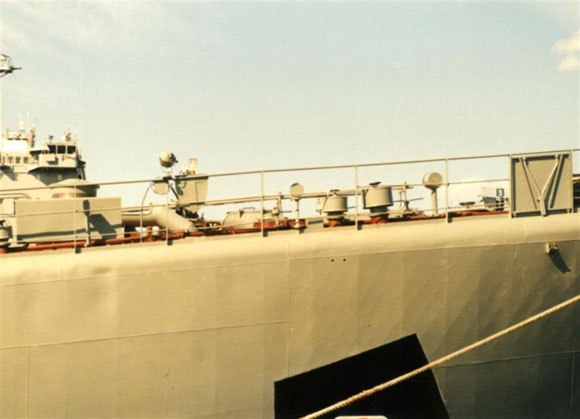
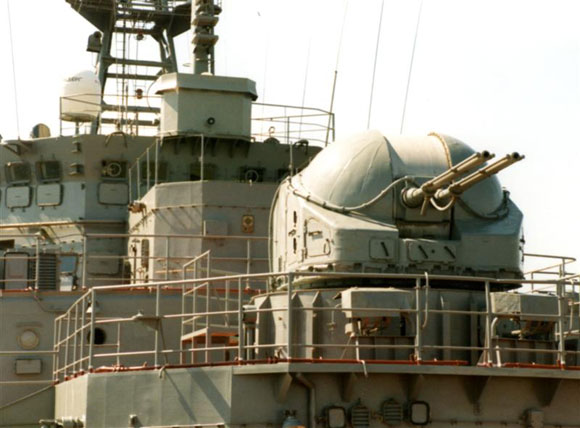
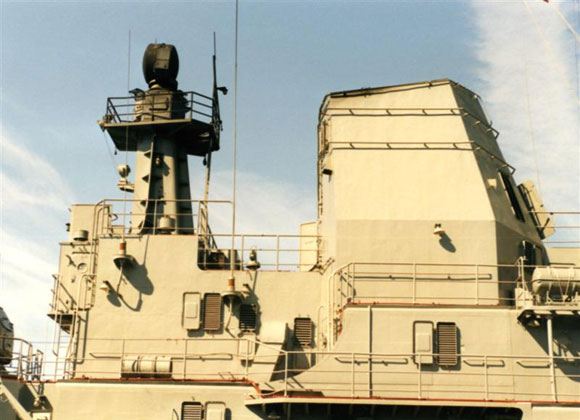
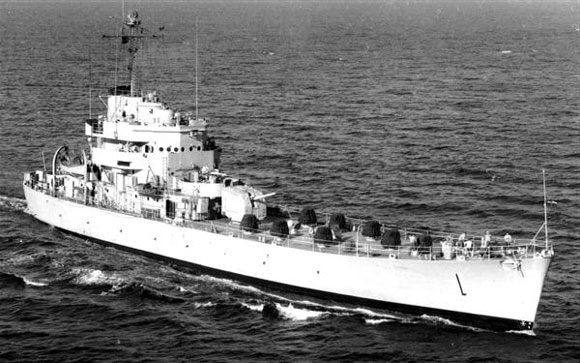










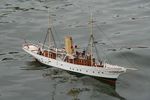
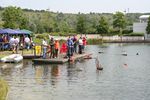

 Register
Register Log-in
Log-in



